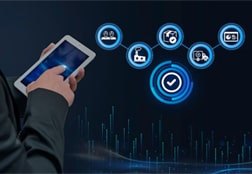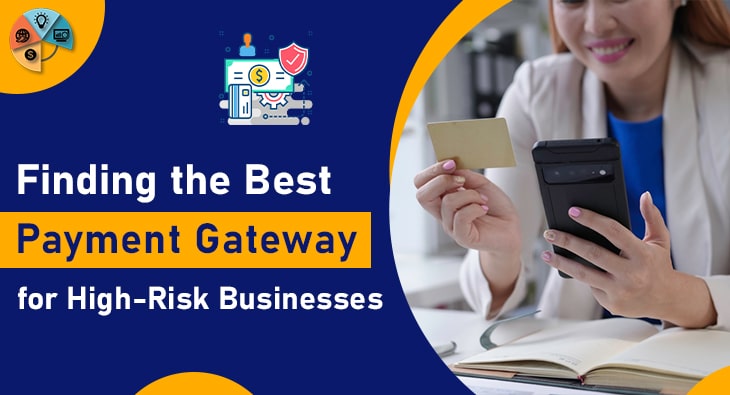In recent years, contactless payments have become a cornerstone of the global payment ecosystem, revolutionizing how we complete transactions. With the convenience of simply tapping a card or a mobile device, these payments have become the preferred method for many consumers, aligning seamlessly with the modern desire for speed and simplicity.
As technology continues to advance, the landscape of contactless payments is expected to undergo significant transformation, heralding a new era of future payment trends. This blog post delves into the evolution, security enhancements, and technological integration shaping the future of contactless payments.
Evolution of Contactless Payment Technologies
The journey of contactless payments started with radio-frequency identification (RFID) technology in payment cards, eventually evolving into near-field communication (NFC) for more secure and efficient transactions.
Digital wallets like Apple Pay and Google Wallet soon followed, leveraging NFC for secure mobile payments. Looking ahead, contactless payments will incorporate biometric authentication methods such as fingerprint and facial recognition to enhance both security and user experience.
Additionally, blockchain technology promises to further revolutionize the field by providing immutable transaction records, increasing transparency, and reducing fraud.
Some Related Blogs
- The Impact of Payment Technology on Customer Experience
- Security Best Practices for Payment Processing
- Cryptocurrency as a Payment Option
- The Role of Payment Gateways in E-Commerce Success
Security Enhancements in Contactless Payments
The advancements in contactless payments have significantly bolstered security measures, addressing long-standing concerns. Modern systems use advanced encryption techniques, such as tokenization, to protect sensitive card information by substituting it with a unique token.
This makes it extremely difficult for unauthorized parties to access meaningful data. Additionally, biometric authentication is increasingly being integrated, adding a layer of security by tying transactions to unique biological identifiers like fingerprints or facial features.
This dual approach—combining encryption with biometrics—ensures that even if one security measure is compromised, the other provides a robust safeguard, greatly minimizing the risk of fraudulent activities.
Impact of 5G on Contactless Payment Systems
The rollout of 5G technology is set to revolutionize contactless payment systems by enabling real-time processing of transactions with ultra-fast data speeds and minimal latency. This will significantly enhance user experiences, allowing for instant and seamless payments.
Additionally, the integration of 5G with the Internet of Things (IoT) will expand the ecosystem of contactless payments to include a wide range of smart devices such as wearables, smart home appliances, and even connected vehicles. Imagine making purchases directly from your smartwatch or having your smart refrigerator automatically reorder groceries and complete the payment—all facilitated by 5G connectivity.
This technological leap will not only provide greater convenience but also open up new possibilities for how and where consumers can engage in contactless transactions. As the network expands, businesses will be able to offer more innovative and integrated payment solutions, meeting the evolving expectations of tech-savvy consumers.
Integration with Emerging Technologies
Integration with emerging technologies is set to redefine the landscape of contactless payments. Artificial intelligence (AI) offers the potential to revolutionize customer interactions by delivering personalized payment experiences and enhancing fraud detection through sophisticated pattern recognition.

Augmented reality (AR) is poised to change the retail experience, enabling consumers to engage in virtual shopping environments where payments can be made seamlessly with just a tap or glance.
Wearable technology is another frontier in this integration. Devices like smart rings, fitness trackers, and even connected clothing are increasingly supporting payment functionalities, allowing users to manage transactions effortlessly. The rise of IoT devices further complements this ecosystem, enabling a wide range of smart devices to facilitate contactless payments, from smartwatches to smart home appliances.
As these technologies continue to evolve, they will offer unprecedented convenience and flexibility, making transactions faster and more secure. Businesses that embrace these innovations will be better positioned to meet the evolving expectations of tech-savvy consumers, offering them more integrated and immersive payment experiences.
Consumer Adoption and Behavior Trends
Consumer adoption of contactless payments has surged due to their convenience, speed, and enhanced security features. The COVID-19 pandemic further accelerated this shift, as individuals sought out safer, touch-free transaction methods to minimize physical contact.
This increased familiarity and comfort with contactless payments have set higher expectations among consumers for seamless and instantaneous payment experiences.
Looking ahead, personalization will play a pivotal role in consumer behavior trends. As AI continues to evolve, it will enable more tailored payment experiences, making transactions not only faster but also more personalized. Consumers will expect businesses to offer integrated payment options that are easy to use across various platforms, from mobile devices to wearables and IoT gadgets.
The proliferation of wearable technology, such as smartwatches and fitness trackers, is also driving the adoption of contactless payments. These devices offer the dual benefits of convenience and immediacy, making them particularly appealing to tech-savvy consumers. Additionally, as more IoT devices become capable of facilitating payments, consumers will likely embrace a wider range of contactless payment methods.
Ultimately, businesses must stay attuned to these evolving consumer preferences and behaviors. By offering flexible, secure, and innovative contactless payment solutions, they can meet the increasing demand for more integrated and immersive payment experiences.
![]()
Email us anytime!
Email customer service 24/7
![]()
Call us anytime!
Reach customer care 24/7 at +1 (727) 330-3944


